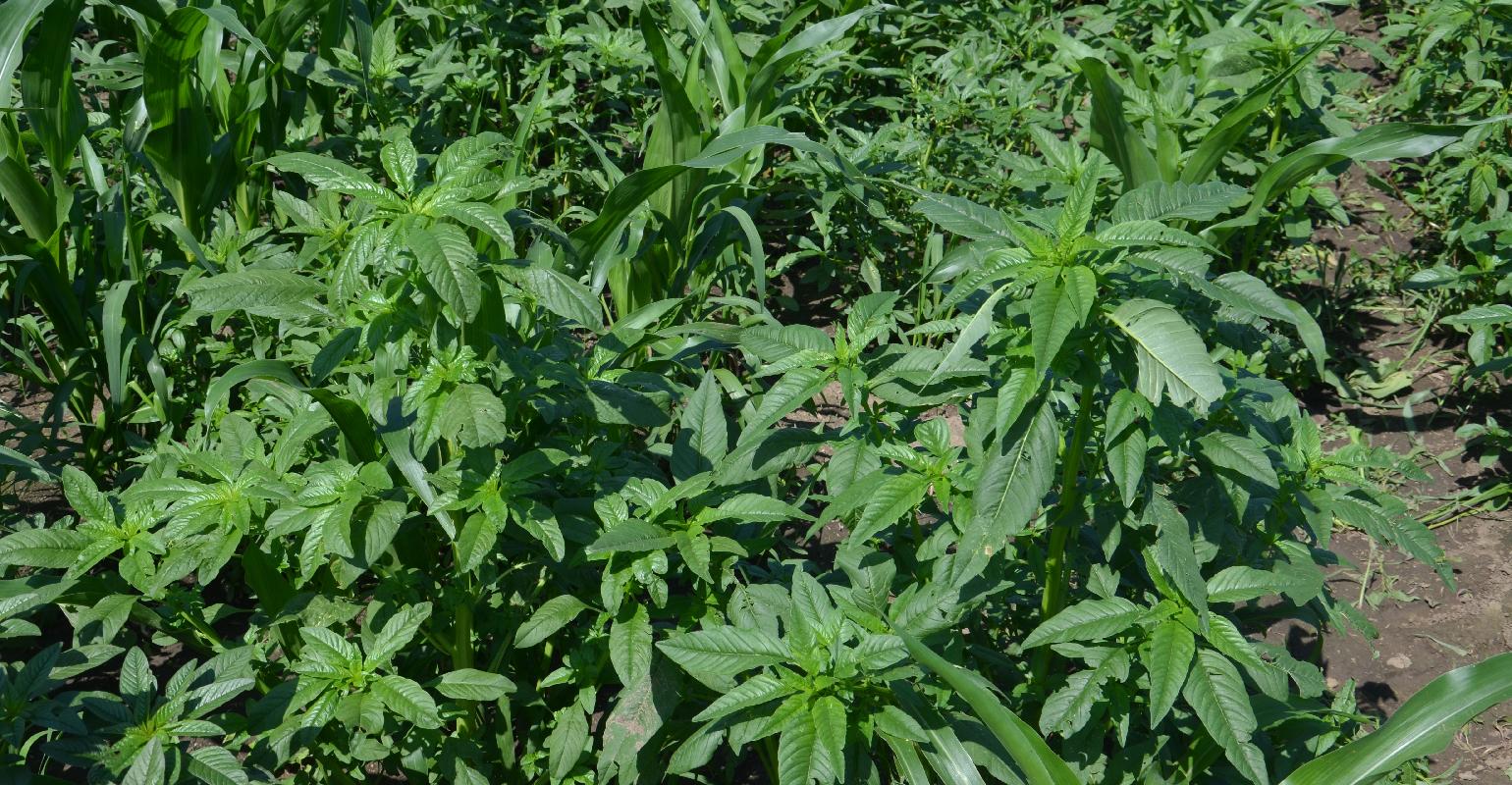Waterhemp control in soybeans begins in corn

Corn Pest Beat: Here are suggestions for controlling waterhemp, starting in corn.
Jan 14, 2021
Tall waterhemp pressure is increasing in soybeans. Are there herbicides that are strong on it in corn to make sure none goes to seed? Or is it a weed we only need to worry about in soybeans where we see it escape?
The Indiana certified crop advisers panel includes Danny Greene, owner of Greene Crop Consulting, Franklin; Jeff Nagel, agronomist with Ceres Solutions, Lafayette; and Marty Park, agronomist with Gutwein Seed Services, Rensselaer.
Greene: Waterhemp escapes are found more often each year. Many preemergence and early postemergence-applied residual corn herbicides provide good control of broadleaf weeds including waterhemp. The most effective programs will start clean and include multiple applications with residual activity. They also will include multiple herbicide site-of-action groups.
Waterhemp is a prolific seed producer, with the potential for producing over 1 million seeds per plant. A high percentage of the seed can remain viable for several years on the soil surface. In corn or beans, it’s best to start clean and stay clean. You can start clean with tillage in a conventional system or with a burndown in a post system. A cereal rye cover crop can help reduce waterhemp pressure in a no-till system.
University of Missouri weed scientists state that a residual preemergence herbicide applied before soybean planting is the most important factor in managing glyphosate-resistant waterhemp.
Nagel: The goal is to manage it well in both crops. Two principles to remember:
- Clean beans start with clean corn.
- Two-pass corn programs will always give more consistent weed control than a one-pass soil-applied or post-applied program.
Just like in soybeans, it’s important to use a soil-applied residual herbicide at or near corn planting. Typically, this is a premix of two or more site-of-action herbicides. Premixes or tankmixes that contain atrazine and a Group 15 herbicide such as acetochlor (Degree, Harness, Keystone), metolachlor (Dual II, Magnum) or pyroxasulfone (Zidua SC) are a good foundation.
Including a premix or tankmix that also contains a Group 27 HPPD herbicide such as isoxaflutole, an active ingredient in Balance Flexx or Corvus, is an option. Using Callisto, Acuron or Resicore adds another soil-applied mode-of-action herbicide with good activity on waterhemp.
We rely heavily on the Group 27 herbicides for postemergence weed control in corn. These include Armezon/Impact, Callisto, Laudis and any premixes. Several dicamba herbicides are also available for use in corn.
It’s very important to steward the Group 27 herbicides and not over-rely on them by omitting a soil- applied herbicide around planting, and instead only spraying postemergence. The fastest path to developing weed resistance is allowing weeds to emerge and then spraying only one effective site-of-action herbicide on them. There is confirmed waterhemp resistance to the Group 27s in a waterhemp population in Illinois.
Park: Tall waterhemp can be a problem weed in all crops. You need to be aware of it and scout for it, especially along field edges and in areas with thin stands or drowned-out spots. I feel it’s easier to control in corn than in soybeans because we currently have more choices and more effective herbicides in corn. Continue to use multiple modes and sites of action as well as residuals for the most effective control in both corn and soybeans.

